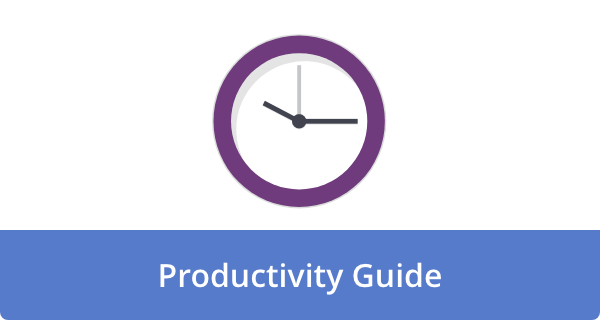

Your daily “must-do” tasks and responsibilities can feel like an Olympic sport. However, finding that coveted peak productivity is within reach, thanks to the art of time blocking. Say goodbye to procrastination and hello to a world where you are the master of your schedule. Get ready to dive into this Ultimate Guide to Successful Time Blocking, where you’ll uncover the fundamentals of time blocking, set up your very own time blocking system, prioritize tasks like a pro, and explore winning strategies for implementation. You can overcome common challenges so that nothing will stand in the way of becoming the time management superstar you were always destined to be.
The Fundamentals of Time Blocking
Time blocking is a masterful technique that supercharges productivity by dividing your day into specific time slots dedicated to accomplishing designated tasks. Implementing this approach enhances focus and allows individuals to compartmentalize their responsibilities, optimizing efficiency and organization. For instance, Elon Musk famously utilizes 5-minute time blocks to manage his hectic schedule as the head of several innovative companies. This method ensures that Musk remains disciplined about his time as he juggles varied priorities, ultimately leading to his impressive track record of accomplishments.
To adopt the practice of time blocking effectively, begin by establishing a list of tasks you wish to complete within the day or week. Next, allocate a specific time frame for each responsibility and specify the task you will focus on during that dedicated period. Utilize digital calendars and reminders to organize your day while also integrating short breaks and buffer times to accommodate any spillover or unforeseen interruptions. By adhering to these practical steps, you will experience a significant improvement in your productivity levels and concentration, ultimately unlocking the benefits of time blocking and empowering you to conquer daily challenges with ease.
Setting Up Your Time Blocking System
Setting up your time blocking system is the crucial first step in unlocking your productivity potential. To create a system that works effectively for you, it’s essential first to determine your peak productive hours and prioritize your tasks accordingly. This might involve monitoring your energy levels over a few days or a self-assessment of your optimal work times.
By allocating your most essential functions to these peak productivity windows, you ensure that you make the most of your time and accomplish more with increased efficiency. Remember also to reserve specific time blocks for activities that revitalize you, such as exercise or breaks, to maintain mental clarity and avoid burnout.
When structuring your time blocking system, consider employing tools such as digital calendars, project management applications, or even traditional agendas to visualize your day. These tools can help you allocate time blocks for your tasks with ease and enable you to modify them according to your progress. Integrating your time blocks with project deadlines and breaking larger tasks into smaller, manageable sections will provide a clear roadmap for your work.
Collaborating with coworkers or sharing your time blocks with them may also prove beneficial, as it establishes transparency and ensures that everyone’s time is respected. By following these guidelines, you’ll be able to create a personalized time blocking system that optimizes your daily workflow, ultimately unleashing your highest levels of productivity.
Prioritizing Tasks and Assigning Time Blocks
Imagine the feeling of accomplishment and relaxation as you knock out your to-do list like a boss, simply by prioritizing tasks and assigning time blocks effectively. This method of organization enables you to tackle pressing duties while keeping you on track, ultimately preventing you from slipping into the abyss of procrastination. For instance, consider the power of the Eisenhower Matrix, which classifies tasks into four categories: urgent-important, not urgent-important, urgent-not important, and not urgent-not important.
By allocating specific time blocks to each category, you can effortlessly manage your responsibilities while ensuring that your energy is spent on tasks that bring maximum results.
To elevate your productivity, set priorities and assign time blocks with thoughtfully considered strategies. Begin by analyzing the time of day when you are most alert and focused; dedicate those prime hours to tackle the urgent/important tasks for heightened efficiency. Embrace the Pomodoro Technique, where you work in intervals of 25 minutes, followed by a 5-minute break, to avoid burnout and maintain motivation.
Implement transitional phrases, such as “Moving on,” “Additionally,” and “Moreover,” to smoothly transition from one time block to another, ensuring a steady flow of productivity. The beauty of effective prioritization and time blocking lies in the powerful combination of clarity, focus, and intention, allowing you to unleash your full productivity potential while leaving ample room for fun and relaxation.
Strategies for Effective Time Blocking Implementation
Effective time blocking implementation starts with a well-defined strategy that accommodates both your professional and personal life. The key is to identify your most productive hours and allocate them to your most important tasks, ensuring maximum efficiency during those times. For instance, if you are a morning person, dedicate that time to tasks requiring higher levels of concentration, while saving administrative or routine activities for later in the day. Studies have shown that having a methodical approach to time management, such as time blocking, increases focus, productivity, and overall satisfaction.
To maximize the benefits of time blocking, it is crucial to constantly evaluate and adjust your strategy based on your workload and achievements. Utilize tools like digital calendars, alarms, and reminders to stay organized and on track. Additionally, practice identifying and eliminating potential distractions such as social media and unnecessary meetings, which have been proven to disrupt productivity. By diligently assessing your progress and eliminating time-wasting activities, you will cultivate a balanced and productive routine customized to your individual needs and work style.
Overcoming Common Time Blocking Challenges
Overcoming common time blocking challenges starts with recognizing and addressing the potential obstacles head-on. One of the biggest hurdles faced by individuals attempting to implement time blocking is feeling overwhelmed by the task at hand. To combat this, start by breaking tasks into smaller, more manageable tasks and distribute them across your designated time blocks.
Not only will this provide a clear sense of direction, but it will also foster a sense of accomplishment as each subtask is completed. Additionally, distractions can greatly hinder productivity. To minimize interruptions, consider putting your phone on silent, setting designated time slots for checking email, and communicating your time blocking schedule with colleagues and family for transparency and support.
Another challenge in effective time blocking lies in finding a balance between rigidity and flexibility. While adhering to a strict schedule can be beneficial, unforeseeable circumstances often arise that may require adjustments. To maintain productivity, it is vital to build in buffer time or utilize time block swapping techniques to adapt to changes.
For example, if an urgent call runs long, you can adjust by swapping a time block with a less time-sensitive task. Incorporating regular reflection and evaluation of your time blocking system can also be advantageous. This will provide insight into what works best for your individual productivity style, allowing for necessary adjustments to enhance the efficiency of your time management. Ultimately, overcoming time blocking challenges requires mindfulness, adaptability, and commitment to fostering a better work-life balance.
Closing Thoughts
In conclusion, Productivity Unleashed: Ultimate Guide to Successful Time Blocking has empowered you with essential tools and strategies to become a master of your own time. By understanding the fundamentals of time blocking, setting up your personalized system, prioritizing tasks effectively, implementing strategies for success, and overcoming common challenges, you are now well-equipped to conquer your days with efficiency and purpose.
As you embark on your journey towards streamlined productivity, always remember that the power to unleash your full potential lies right at your fingertips – all it takes is the right time blocking approach and the commitment to see it through. So, go forth and make every moment count!
Frequently Asked Questions
What is time blocking?
Time blocking is a productivity technique that involves dividing your day into specific time slots dedicated to accomplishing designated tasks. This method enhances focus and efficiency by allowing individuals to compartmentalize their responsibilities and optimize their daily workflow.
How do I set up my own time blocking system?
Setting up your time blocking system involves determining your peak productive hours and prioritizing tasks accordingly. You can use digital calendars, project management applications, or traditional agendas to visualize your day and allocate time blocks for your tasks. Integrate your time blocks with project deadlines, break larger tasks into smaller sections, and consider collaborating or sharing your schedule with coworkers to ensure everyone’s time is respected.
How do I prioritize tasks and assign time blocks effectively?
To prioritize tasks and assign time blocks effectively, analyze your most alert and focused hours and dedicate those prime times to urgent/important tasks. You can use methods like the Eisenhower Matrix to classify tasks into categories and allocate specific time blocks. Embrace techniques like the Pomodoro Technique to avoid burnout and maintain motivation. Implement transitional phrases to smoothly transition between time blocks and maintain a steady flow of productivity.
What strategies should I consider for effective time blocking implementation?
Strategies for effective time blocking implementation include identifying your most productive hours and allocating them to your most important tasks, evaluating and adjusting your strategy based on your workload and achievements, and utilizing tools like digital calendars, alarms, and reminders. Also, practice identifying and eliminating potential distractions to improve focus and productivity.
How can I overcome common time blocking challenges?
Overcoming time blocking challenges involves recognizing and addressing potential obstacles, such as being overwhelmed and managing distractions. Break tasks into smaller, more manageable tasks, minimize interruptions by setting designated times for checking emails or phone calls, and maintain a balance between rigidity and flexibility by building buffer times and using time block swapping techniques when unforeseeable circumstances arise.











Howie Jones
My name is Howie and I'm a Customer Success Manager at Calendar. I like to ensure our customers get the best experience using our product. If you have questions email me howie at calendar.com